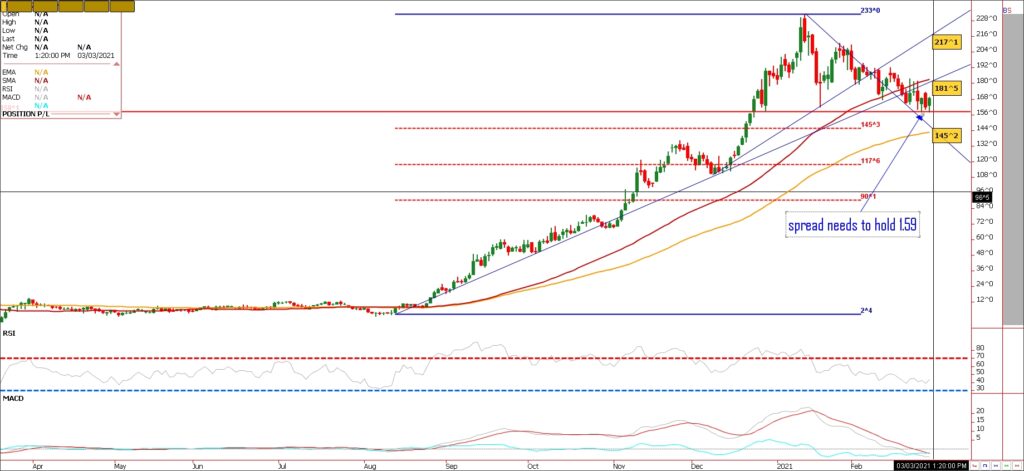Commentary
Weather worries continue to plague South American growing areas as too much rain in Brazil hampers harvest activity, while hot and dry conditions in Argentina persist amid a classic La Nina weather pattern. Brazil harvest is at 25 percent for soybeans while second crop corn planting is only at 33 percent planted versus 67 percent this time last year.. The secondary corn crop can’t get planted until the beans can get out of the ground. Rains in central and northern growing areas persist this week, delaying harvest. In Argentina needed rains in some key areas remain absent and the forecast looks dry the next 10 days.
The U.S. crushed 196.5 million bu. of soybeans during January, which topped expectations by roughly 1.4 million bu. and easily marked the largest January crush on record. That was also the second largest crush on record, coming in just shy of the 5.897 million short tons crushed in October 2020. The issues in South America, increased crush pace, and aggressive exports could have USDA in next Tuesday’s report to both raise their demand forecasts while lowering ending stocks. It is my belief that the last two price dips to 1378 on Friday (2/28) and this morning to 1380 were bought. If USDA were to lower ending stocks below 100 million bushels from 123 million in the last report, we could see old crop beans make another leg higher. I’m not saying it will happen, but anything is possible. I included an old crop/new crop soybean spread below. July 21/Nov 21 beans. Three times since Dec 29th, the spread has traded 1.59 July 21 over, but the market wasn’t able to close under it. That is a key level in my view. Should the spread hold here, I think July 21 gains on the new crop Nov 21 to test the spread highs late last year at 2.33. My opinion here. Events can enter into the market at any moment to change my opinion. Today the spread settled at 1.69 July 21 over. If one bull spreads here make sure you use a stop. A close under 1.58 and I am out if long. Please call or email me with questions.

Please join me for a free grain and livestock webinar every Thursday at 3pm Central. We discuss supply, demand, weather, and the charts. Sign Up Now
Walsh Trading, Inc. is registered as a Guaranteed Introducing Broker with the Commodity Futures Trading Commission and an NFA Member.
Futures and options trading involves substantial risk and is not suitable for all investors. Therefore, individuals should carefully consider their financial condition in deciding whether to trade. Option traders should be aware that the exercise of a long option will result in a futures position. The valuation of futures and options may fluctuate, and as a result, clients may lose more than their original investment. The information contained on this site is the opinion of the writer or was obtained from sources cited within the commentary. The impact on market prices due to seasonal or market cycles and current news events may already be reflected in market prices. PAST PERFORMANCE IS NOT NECESSARILY INDICATIVE OF FUTURE RESULTS.
All information, communications, publications, and reports, including this specific material, used and distributed by Walsh Trading, Inc. (“WTI”) shall not be construed as a solicitation for entering into a derivatives transaction. WTI does not distribute research reports, employ research analysts, or maintain a research department as defined in CFTC Regulation 1.71.
